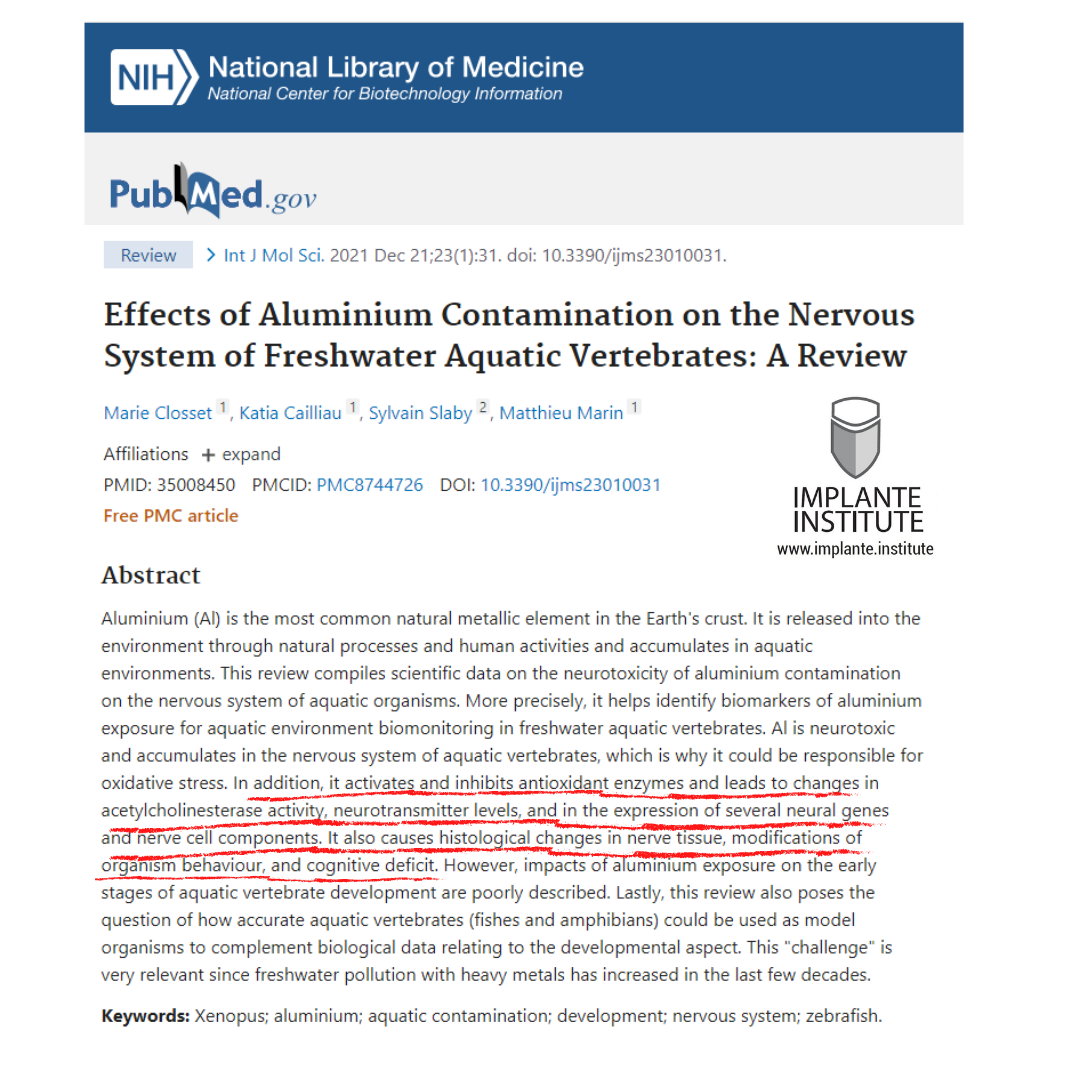Effects of Aluminium Contamination on the Nervous System of Freshwater Aquatic Vertebrates: A Review
Link: https://pubmed.ncbi.nlm.nih.gov/35008450/
Marie Closset 1, Katia Cailliau 1, Sylvain Slaby 2, Matthieu Marin 1
PMID: 35008450 PMCID: PMC8744726 DOI: 10.3390/ijms23010031
Abstract
Aluminium (Al) is the most common natural metallic element in the Earth's crust. It is released into the environment through natural processes and human activities and accumulates in aquatic environments. This review compiles scientific data on the neurotoxicity of aluminium contamination on the nervous system of aquatic organisms. More precisely, it helps identify biomarkers of aluminium exposure for aquatic environment biomonitoring in freshwater aquatic vertebrates. Al is neurotoxic and accumulates in the nervous system of aquatic vertebrates, which is why it could be responsible for oxidative stress. In addition, it activates and inhibits antioxidant enzymes and leads to changes in acetylcholinesterase activity, neurotransmitter levels, and in the expression of several neural genes and nerve cell components. It also causes histological changes in nerve tissue, modifications of organism behaviour, and cognitive deficit. However, impacts of aluminium exposure on the early stages of aquatic vertebrate development are poorly described. Lastly, this review also poses the question of how accurate aquatic vertebrates (fishes and amphibians) could be used as model organisms to complement biological data relating to the developmental aspect. This "challenge" is very relevant since freshwater pollution with heavy metals has increased in the last few decades.
Keywords: Xenopus; aluminium; aquatic contamination; development; nervous system; zebrafish.
OBS: This review compiles scientific data on the neurotoxicity of aluminium contamination on the nervous system of aquatic organisms.
It could be responsible for oxidative stress, it activates and inhibits antioxidant enzymes and leads to changes in acetylcholinesterase activity, neurotransmitter levels, and in the expression of several neural genes and nerve cell components, it also causes histological changes in nerve tissue.
That is why aluminum is neurotoxic even to every living been.

See free analyzes at: https://implante.institute/analises?perm_status=1
OBS: Esta revisão compila dados científicos sobre a neurotoxicidade da contaminação por alumínio no sistema nervoso de organismos aquáticos.
Pode ser responsável pelo estresse oxidativo, ativa e inibe enzimas antioxidantes e leva a alterações na atividade da acetilcolinesterase, nos níveis de neurotransmissores e na expressão de vários genes neurais e componentes das células nervosas, também causa alterações histológicas no tecido nervoso.
É por isso que o alumínio é neurotóxico até para todos os seres vivos.

